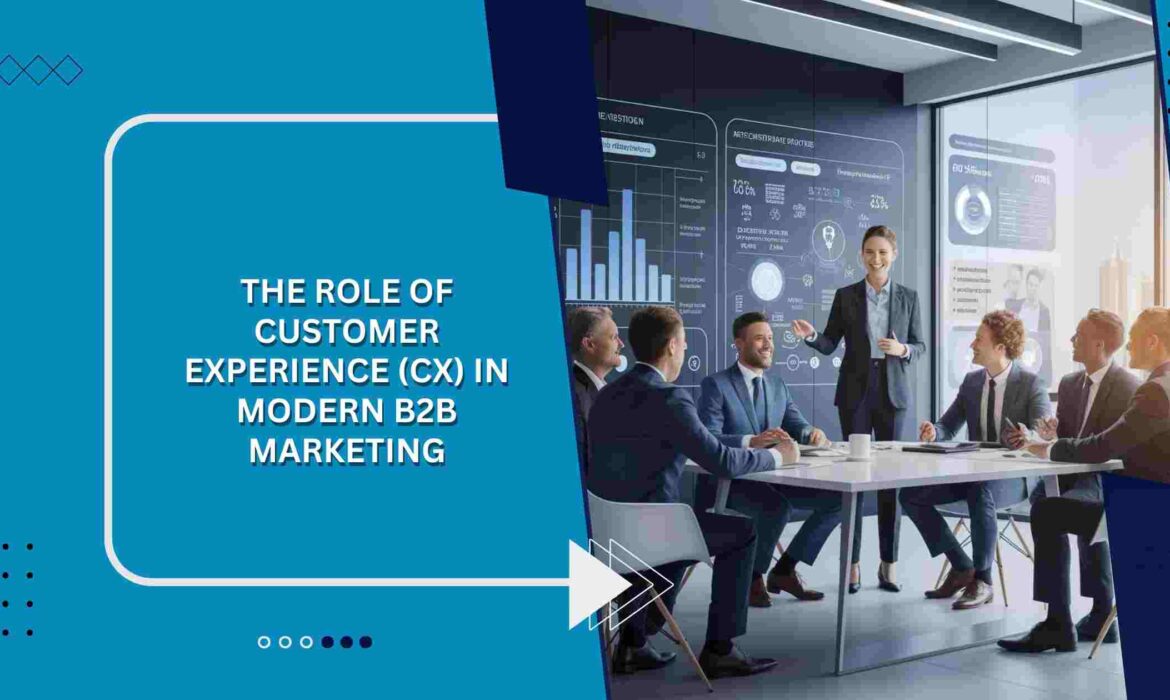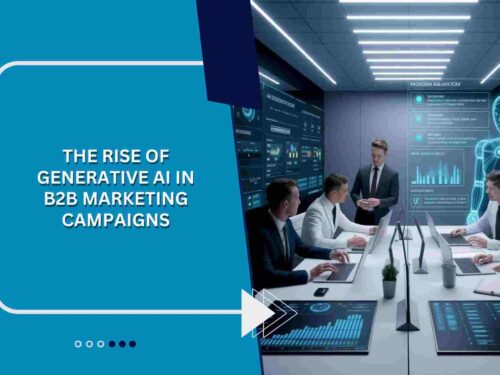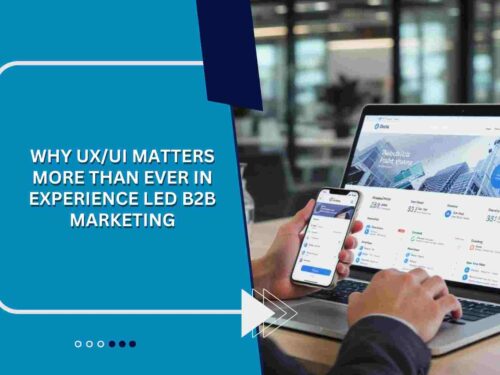In the fast-evolving world of B2B marketing, Customer Experience (CX) has become the ultimate competitive advantage. While price, product quality, and service still matter, the way businesses make their customers feel throughout the buyer journey often determines long-term success. Modern buyers expect the same seamless, personalized experiences in professional settings that they enjoy in consumer purchases. This shift has elevated Customer Experience from a secondary consideration to a central pillar of B2B marketing strategies.
For businesses striving to win in today’s hypercompetitive marketplace, Customer Experience is no longer optional it is the very foundation of sustained growth and stronger buyer relationships.
Why Customer Experience Matters More Than Ever in B2B
Historically, B2B decisions were driven by rational factors such as cost savings, technical specifications, or operational efficiency. But the modern buyer is also influenced by emotional factors trust, confidence, and connection. Studies consistently reveal that B2B buyers are willing to pay more for brands that deliver better experiences.
In a digital-first environment, Customer Experience serves multiple roles:
- It simplifies complex decision-making for buyers.
- It helps businesses stand out in crowded markets.
- It builds trust and loyalty beyond transactions.
- It accelerates deal cycles by reducing uncertainty.
When buyers feel understood and valued, they are far more likely to engage, convert, and advocate for the brand.
Key Elements of Customer Experience in B2B Marketing
Delivering meaningful Customer Experience requires a deliberate approach that integrates technology, strategy, and empathy. The following elements form the foundation of modern CX:
1. Personalization Beyond Basics
Personalization in B2B goes far beyond using the customer’s name in an email. It involves tailoring communications, recommendations, and solutions based on industry, company size, pain points, and buying stage. Buyers expect vendors to anticipate their needs and provide content or services that address specific challenges.
For example, an IT decision-maker at a mid-sized firm should receive different case studies and ROI analyses than a procurement officer at a global enterprise. This level of personalization shows that the brand truly understands the customer’s world, creating a deeper connection.
Modern buyers interact across multiple touchpoints email, webinars, LinkedIn, events, and chatbots. A strong Customer Experience ensures consistency across all channels. Whether a prospect interacts with sales, customer support, or digital campaigns, the message and tone must align to create a seamless journey.
Omnichannel strategies also reduce friction by enabling customers to continue their journey where they left off, regardless of the platform. This continuity builds trust and positions the brand as reliable and customer-centric.
3. Proactive Communication
Customer Experience in B2B thrives on transparency and clarity. Buyers value proactive updates about timelines, service availability, or product changes. This prevents misunderstandings and strengthens confidence. A proactive approach shifts the dynamic from transactional to relational, making buyers feel respected and prioritized.
4. Empowering Self-Service
Today’s professionals expect autonomy in their decision-making journey. Offering portals, knowledge bases, and AI-driven chat support gives buyers the tools to solve problems independently. Self-service not only improves Customer Experience but also reduces support costs, making it a win-win for both sides.
5. Trust Through Data Security
In B2B, trust is a non-negotiable factor of Customer Experience. Buyers need assurance that their data, transactions, and intellectual property are protected. Companies that highlight compliance, transparency, and cybersecurity as part of the experience build stronger, more enduring customer relationships.
The Emotional Side of B2B Customer Experience
While B2B deals involve large budgets and multiple stakeholders, they are ultimately human-to-human interactions. Decision-makers want to feel valued, respected, and reassured. Delivering exceptional Customer Experience addresses these emotional drivers by:
- Creating confidence in the decision process.
- Reducing stress during complex evaluations.
- Building a sense of partnership rather than vendor-client dynamics.
A company that invests in making buyers feel heard and understood will always outperform one that focuses solely on technical features or cost advantages.
The Role of Technology in Enhancing Customer Experience
Technology is the backbone of modern Customer Experience strategies. From automation to AI, new tools allow marketers to deliver hyper-personalized, efficient, and scalable interactions.
1. AI-Powered Personalization
Artificial intelligence helps analyze customer data and predict future needs. With AI, B2B marketers can recommend tailored content, forecast churn risk, or identify cross-selling opportunities. The result is a more relevant and responsive experience.
Automation tools ensure consistent engagement across the customer journey. From drip campaigns to lead nurturing workflows, automation helps deliver the right message at the right time without overwhelming sales teams.
3. Customer Data Platforms (CDPs)
CDPs unify data from multiple sources into a single customer profile, enabling marketers to understand buyer behavior across channels. A unified view is critical for designing seamless Customer Experience strategies that reflect actual customer journeys.
4. Conversational AI and Chatbots
Chatbots powered by AI deliver 24/7 support, answering common queries instantly while passing complex issues to human agents. This immediate responsiveness enhances satisfaction and keeps potential deals moving forward.
Measuring Customer Experience in B2B Marketing
You cannot improve what you don’t measure. Tracking Customer Experience requires a mix of qualitative and quantitative metrics:
- Net Promoter Score (NPS): Measures customer loyalty and willingness to recommend.
- Customer Satisfaction (CSAT): Tracks immediate reactions to interactions or services.
- Customer Effort Score (CES): Evaluates how easy it is for buyers to engage and solve problems.
- Engagement Analytics: Tracks content interactions, webinar attendance, or email responses.
- Retention & Churn Rates: Reflects long-term success of experience strategies.
When businesses monitor these metrics consistently, they gain insights into customer sentiment and can adapt strategies proactively.
Building a Culture of Customer-Centricity
Technology and strategy are important, but real success comes from embedding Customer Experience into the culture of the organization. Every department sales, marketing, support, and product development must embrace customer-centric values.
Key practices include:
- Training employees to listen empathetically to customer needs.
- Aligning KPIs with customer satisfaction and loyalty.
- Encouraging collaboration between departments for a unified journey.
- Rewarding teams that demonstrate outstanding customer care.
This cultural alignment ensures that customers experience consistent value, regardless of which department they interact with.
Customer Experience as a Growth Engine
Great Customer Experience does more than keep customers happy it fuels business growth. In B2B marketing, satisfied buyers become advocates, influencers, and repeat customers. They drive referrals, leave positive reviews, and open doors to new markets.
Companies that prioritize CX often enjoy:
- Higher conversion rates due to trust and credibility.
- Increased lifetime value from loyal customers.
- Stronger differentiation in crowded industries.
- Reduced churn and lower acquisition costs.
In this sense, Customer Experience is not just a marketing strategy it is a growth engine that powers long-term business resilience.
Future Trends in B2B Customer Experience
As markets evolve, so will the expectations for Customer Experience. Some emerging trends include:
- Predictive CX: Using AI to anticipate customer needs before they arise.
- Experience-Driven Revenue Models: Where customer outcomes directly shape pricing and contracts.
- Sustainability as CX: Buyers increasingly value eco-friendly practices as part of their experience.
- Immersive CX with AR/VR: Virtual product demos and training to enhance buyer journeys.
- Emotion Analytics: Leveraging sentiment analysis to personalize experiences at scale.
These innovations will push businesses to continuously refine their approaches, ensuring that Customer Experience remains at the core of B2B marketing success.
Building stronger connections, delivering personalized journeys, and ensuring seamless engagement is no longer optional it’s the standard. If you want to create customer-first strategies that drive measurable growth, Acceligize can help you navigate the future of B2B marketing with proven expertise.




